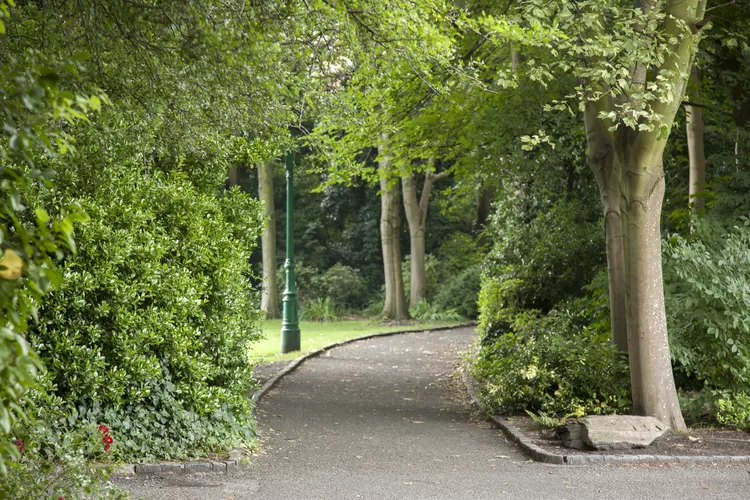Merrion Square: A Guide to Dublin’s Georgian Gem
A short walk from St. Stephen’s Green, Merrion Square is a public garden in Dublin. This charming park stands out as Dublin’s most cherished Georgian Square, showcasing stunning red brick Georgian architecture. As the best-preserved of Dublin’s five Georgian Squares, it invites visitors to explore its historic beauty along with St. Stephen’s Green, Fitzwilliam Square, Parnell Square, and Mountjoy Square.
The History of Merrion Square
Merrion Square was first developed in 1762, showcasing Dublin’s formal architectural elegance and aristocratic heritage. The square was created due to its proximity to the Duke of Leinster’s palace, which now houses Ireland’s Parliament.
Surrounded by uniform Georgian buildings on three sides, the townhouses were meticulously constructed over three decades, adhering to strict architectural guidelines to ensure a cohesive aesthetic.
For many years until the 1960s, the park was an exclusive area accessible only to residents. Subsequently, it was handed over to the Dublin Corporation, which undertook restoration efforts in line with its Georgian roots. Initially named “Archbishop Ryan Park” after the Catholic archbishop who transferred the area, it was later renamed Merrion Square Park in 2010.
Over the years, the square has housed notable residents, including Oscar Wilde, who lived at No. 1 Merrion Square, and W.B. Yeats at No. 82, who criticized the square’s 18th-century style. Daniel O’Connell, a significant figure in Irish history, resided at No. 58.
What to do in Merrion Square
Merrion Square functions primarily as a public green space in Dublin. Open during daylight hours, the park boasts expansive lawns and well-maintained flower beds, making it an ideal setting for a peaceful stroll amidst the city bustle. Particularly, students from nearby Trinity College often visit to relax on the lawns during sunny days.
The highlight of the park is undoubtedly the vibrant statue of Oscar Wilde, reclined gracefully on a rock in the northwestern corner. Another key landmark is the Rutland Memorial, a former fountain dedicated to Charles Manners, Fourth Duke of Rutland, designed to provide water to the city’s less fortunate.
Every Thursday, the square transforms as a lunchtime market appears, offering a diverse range of street food from 11:30 a.m. to 2:30 p.m. For art enthusiasts, local artists frequently exhibit their works along the park’s outer railings, especially on Sundays.
Facilities
Merrion Square provides limited facilities, including a small playground for children, which was renovated in 2014 and takes inspiration from Wilde’s short story The Selfish Giant.
The park features pathways that encourage leisurely walks and a central floral garden, enhancing the serene environment.
It is essential to note that there are no public restrooms within Merrion Square; however, facilities may be available at the nearby National Museums, which welcome visitors free of charge.
What Else to Do Nearby
Surrounding Merrion Square are stunning Georgian buildings, many of which serve as private offices. Visitors can explore some of these historic structures, such as No. 63 Merrion Square, which remains one of the most intact Georgian buildings, retaining much of its original charm. This building is owned by the Royal Society of Antiquaries of Ireland and occasionally hosts public events and lectures.
The fourth side of the square is bordered by prominent attractions such as the Natural History Museum, Leinster House, and the National Gallery of Ireland.
The National History Museum is part of the National Museum of Ireland, showcasing permanent exhibits that highlight Irish wildlife through taxidermy and plant displays.
Meanwhile, Leinster House, once the residence of the Duke of Leinster, has functioned as Ireland’s parliament since 1922. Guided tours are available; visitors must bring official identification for access.
The National Gallery of Ireland houses a delightful collection emphasizing Irish artists, including works donated by George Bernard Shaw. Best of all, entry to the permanent collection is free to visit.
A short distance away lies Trinity College, considered one of Dublin’s must-see destinations. Here, visitors can wander through picturesque university grounds, partake in tours, or admire the renowned Book of Kells.





